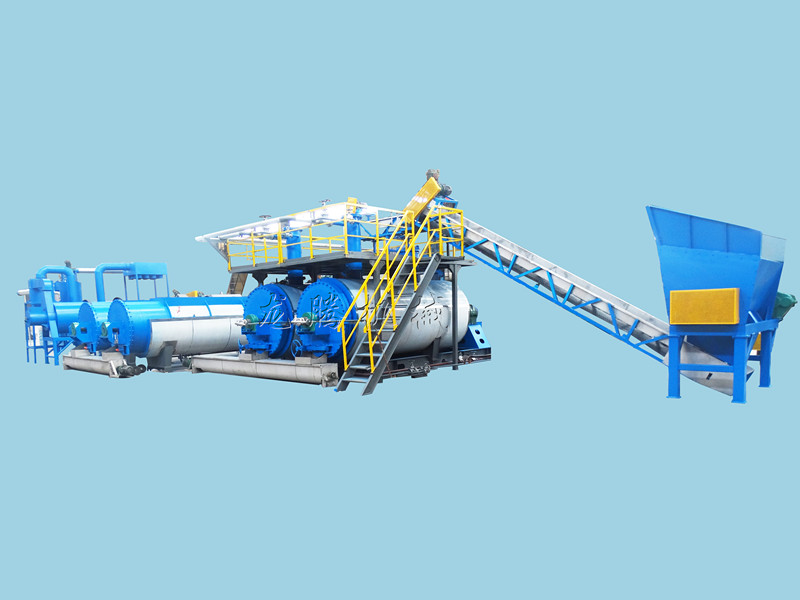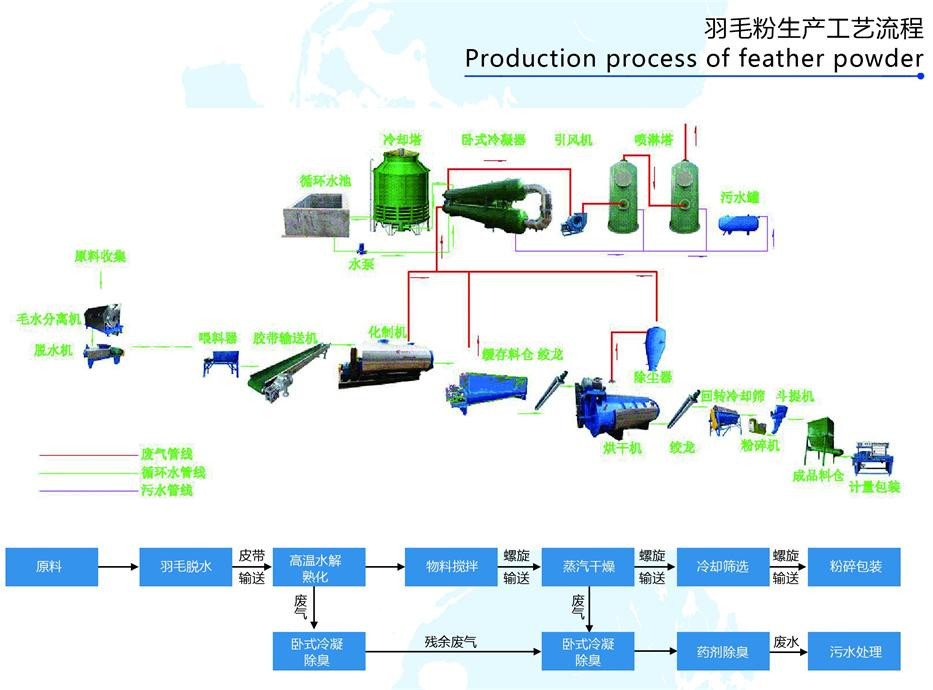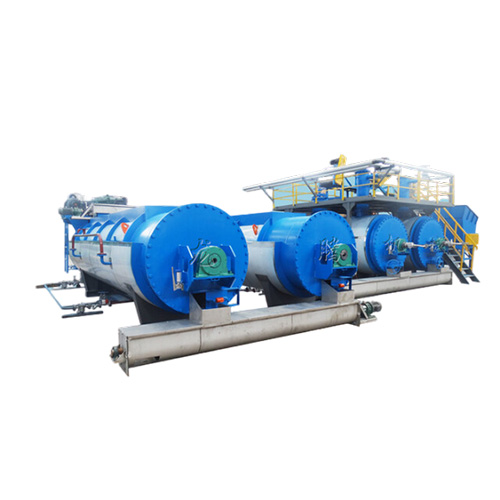Complete set of feather powder equipment
1、 Introduction to Hydrolyzed Feather Powder Equipment
The new type of hydrolysis feather powder machine developed by our company is a new generation product developed based on advanced technologies from European and American countries, combined with more than 20 years of production experience of our company. It adopts a hydrolysis method under high temperature, high pressure, and strong shear conditions, with advanced process methods and unique equipment. Its prominent feature is that it completely destroys the spatial structure of feather keratin, transforming it from food industry waste into a high-quality soluble protein feed that can be fully digested and absorbed by livestock and poultry, achieving the goal of turning waste into treasure. According to multiple tests conducted by authoritative departments, its average digestion rate and absorption rate can reach over 75%.
The entire set of equipment consists of a feather water separator, feather squeezing machine, feather feeder, belt conveyor feeding machine, hydrolysis tank, buffer material bin, screw conveyor, steam dryer, rotary cooling screen, crusher, quantitative packaging machine, exhaust gas condensation deodorization system, and electrical control cabinet.
2、 Distribution diagram of feather powder equipment units

3、 Product yield: Generally, 10000 feathers can produce 500kg of finished feather powder
4、 The equipment and process modifications mainly focus on the following aspects:
1. In order to meet the requirements of rapid heating hydrolysis, the heat transfer area has been increased, and the equipment of the same model has increased by about 40%. However, the external dimensions of the equipment have not been increased, making the occupied area of the equipment the same as the prototype number.
2. Similarly, the heat transfer capacity per unit area has been increased, that is, the heat transfer coefficient K has been increased, causing the K value to increase from around 50-60kcal/㎡ ℃ h to around 75kcal/㎡ ℃ h now. We have adopted multiple measures on the modified equipment, such as self-cleaning of the heating surface, equidistant heating surfaces from the central material to the surrounding heating surfaces, evenly distributed heating surfaces inside the body, and intensified stirring.
3. In order to improve the pressure resistance of the equipment, the modified equipment has been improved in multiple weak points under pressure, eliminating or weakening the majority of stress concentration areas and improving the stress condition of pressure bearing components. High quality steel plates such as 20g, 16MnR, and 20c were selected as the main pressure components for boilers and pressure vessels, which improved the safety and applicability of the equipment.
4. In order to improve the shear force on feathers and their network keratin, multiple measures have been taken in the internal structure of the new equipment. Firstly, increasing the number of stirring blades, secondly, changing the shape of stirring blades, and thirdly, adopting a structure with fixed and moving teeth to increase relative velocity, greatly improving the shear conditions.
By taking the above measures, product quality and production efficiency have been significantly improved. Mainly manifested in:
1. The cysteine content of the product has significantly increased, reaching 1.5 times that of acid hydrolyzed feather powder. The digestion rate has significantly improved. Under the optimal process conditions, the amino acid digestion rate of the product has reached 41-80%, and the gastric enzyme digestion rate (PDP), amino acid efficiency (PDAA), protein solubility (PS), amino acid content, bulk density (BD) and other indicators of the product have all been significantly improved.
2. It has significant characteristics such as shortened operation assistance time, high steam utilization rate, and high thermal efficiency. According to actual measurements, it can save about 6% of steam.
3. Due to rapid, uniform, and stable heating, the product quality is stable.
5、 Quality requirements for hydrolyzed feather powder
1. Sensory requirements for hydrolyzed feather powder
project | index |
character | Dry powder granular |
colour and lustre | Light yellow, brown, dark brown, black |
smell | Normal odor with hydrolyzed hair powder and no odor |
2. Physical and chemical indicators of hydrolyzed feather powder:
project | index | |
Class A | secondary | |
Crushing particle size | The standard aperture passed through shall not exceed 3mm | |
Unhydrolyzed feather powder | ≤10 | |
moisture content | ≤10 | |
crude fat | ≤5 | |
cystine | ≥3 | |
crude protein | ≥80 | ≥75 |
crude ash | ≤4 | ≤6 |
Sand fraction | ≤2 | ≤3 |
In vitro digestibility | ≥80 | ≥70 |
3. Hygienic requirements for hydrolyzed feather powder:
Salmonella cannot be detected, and the allowable amount of coliform bacteria per hundred grams (MPN/100) is less than 1 × 10. The allowable amount of arsenic per kilogram shall not exceed 2mg
6、 Precautions for producing feather powder using high-temperature and high-pressure hydrolysis method
Clean the feathers, put them into the hydrolysis tank, inject steam, and hydrolyze them into blocky protein gel, which can be fed after drying and crushing. The quality of feather powder processed by this method depends on the comprehensive effect of three parameters: hydrolysis time, temperature, and pressure.
The processing parameters tested by Latshaw et al. (1994) were: 74 points/30 kPa; The suitable processing parameters reported by Liu Hanlin et al. (1994) are 20-30 points/700 kPa; The result of Shen Yinshu et al. (2000) is 30 points/400 kilopascals. The processing time is similar, but the processing pressure varies greatly. As the hydrolysis temperature and time increase, amino acid degradation intensifies, with sulfur-containing amino acids (cysteine) being the most prominent. Therefore, feather powder processing plants should determine the appropriate processing parameters through experiments based on their own processing equipment conditions, and should not apply other people's parameters.


